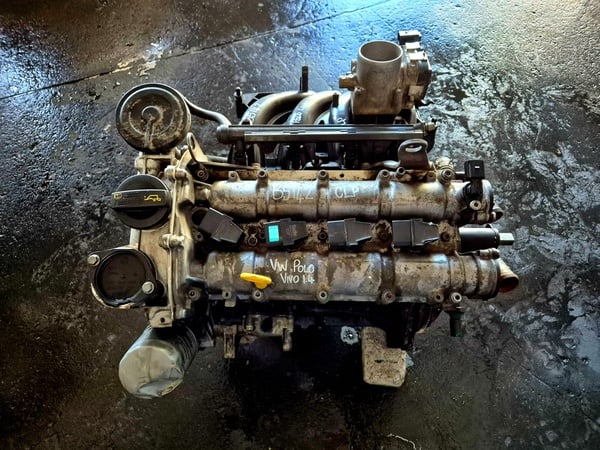Enhance your machinery with a high-quality clp engine.
Enhance your machinery with a high-quality clp engine.
Blog Article
Exactly How a Clp Engine Can Enhance Effectiveness in Various Industries
The development of CLP engines marks a considerable change in operational performance across numerous sectors, driven by their capacity to optimize fuel intake and minimize downtime. As organizations significantly prioritize sustainability along with efficiency, the role of CLP engines comes to be even a lot more crucial.
Introduction of CLP Engines
CLP engines, or Continual Liquid Propellant engines, represent a considerable advancement in propulsion technology, particularly for space applications. These engines utilize a continuous feed system that allows for the continual expulsion of propellant, leading to boosted performance and performance compared to typical strong or hybrid propulsion systems. By preserving a constant circulation of liquid propellant, CLP engines can achieve extra exact thrust control, which is important for steering spacecraft in numerous goal situations.
The design of CLP engines incorporates sophisticated materials and ingenious fuel monitoring systems. clp engine. This leads to reduced weight and boosted reliability, crucial aspects for long-duration space goals. Additionally, the continual operation minimizes the threat of combustion instability, an usual challenge in standard rocket engines.

Advantages in Manufacturing
The manufacturing of Constant Fluid Propellant (CLP) engines offers numerous noteworthy advantages that improve both effectiveness and cost-effectiveness. Among the key advantages is the structured manufacturing procedure, which lowers the complexity connected with traditional propulsion systems. By utilizing liquid propellant, manufacturers can achieve greater accuracy in engine efficiency, bring about maximized power output and decreased waste.
In addition, CLP engines facilitate a greater level of modularity, allowing for easier integration into different manufacturing lines. This versatility can dramatically decrease lead times and enhance total functional adaptability. Using CLP innovation also tends to decrease the requirement for substantial maintenance as a result of less relocating parts, which equates into lowered downtime and functional expenses.

Applications in Logistics
Leveraging Continual Fluid Propellant (CLP) engines in logistics offers considerable advantages in functional efficiency and reliability. These engines provide a robust service for various transportation needs, enabling the seamless movement of items throughout substantial ranges. The intrinsic layout of CLP engines permits constant power outcome, which equates into smoother and a lot more predictable transportation schedules.
One of the key applications of CLP engines in logistics remains in durable freight transport, where they can drive both ground and aerial vehicles. Their capability to preserve Visit Website high efficiency under differing lots conditions makes sure that distribution timelines are met, thus improving consumer fulfillment. Furthermore, CLP engines can be incorporated right into automated logistics systems, assisting in real-time monitoring and optimizing path preparation.
In addition, the resilience of CLP engines minimizes upkeep downtime, enabling logistics business to maximize their operational capabilities. This is specifically beneficial in warehousing operations, where performance in managing and moving items is important. As logistics proceeds to develop, the integration of CLP engines stands for a forward-thinking strategy that not just enhances efficiency but additionally sustains the market's growing needs for integrity and rate.
Effect On Power Efficiency
Just How do Continuous Fluid Propellant (CLP) engines improve power effectiveness in transport? CLP engines use a regular flow of liquid fuel, enhancing combustion procedures and maintaining a steady drive outcome. This design decreases energy losses related to conventional combustion engines, where gas distribution can vary and lead to inefficiencies.
The continuous procedure of CLP engines permits a much more efficient thermal cycle, leading to higher specific impulse contrasted to standard engines. clp engine. This equates to lowered fuel consumption for the exact same amount of work done, dramatically reducing functional costs throughout numerous transportation markets, consisting of aviation and maritime markets
Additionally, the capacity of CLP engines website here to keep optimal performance under differing lots problems reduces the need for regular acceleration and slowdown, better boosting gas efficiency. Improved energy efficiency not only contributes to set you back savings however likewise brings about decrease greenhouse gas emissions, lining up with worldwide sustainability goals.
Future Trends and Innovations
Emerging improvements in Constant Liquid Propellant (CLP) engine technology guarantee to transform the landscape of transportation efficiency and sustainability. As sectors pivot towards greener alternatives, CLP engines stand at the center, incorporating cutting-edge products and design methods that improve efficiency while lessening ecological influence.
Among the most appealing trends is the adoption of hybrid systems that integrate CLP engines with sustainable energy sources. This harmony can enhance fuel intake and minimize discharges, aligning with international sustainability goals. Furthermore, advancements in computational liquid dynamics (CFD) are helping with the design of even more aerodynamically effective engines, leading to lowered drag and enhanced gas effectiveness.
In addition, the growth of wise surveillance systems is established to improve operational efficiencies. These systems utilize data analytics and IoT technology to optimize engine efficiency in real-time, making sure that the engines run within their most efficient criteria.
As research study continues to explore alternate propellant formulations-- such as biofuels and artificial fuels-- the future of CLP engines looks appealing. By utilizing these technologies, markets can not just improve their effectiveness yet likewise add considerably to a cleaner, extra sustainable future in transport.
Conclusion
In verdict, CLP engines represent a substantial development in efficiency across visit homepage several sectors. Their ability to enhance gas intake and reduce functional prices, combined with a constant feed system, boosts power output and functional reliability. The combination of innovative materials and fewer relocating components minimizes maintenance demands, while placement with sustainability objectives placements CLP engines as a critical modern technology for the future. Continued development in this area guarantees additional enhancements in performance and ecological performance.
Report this page